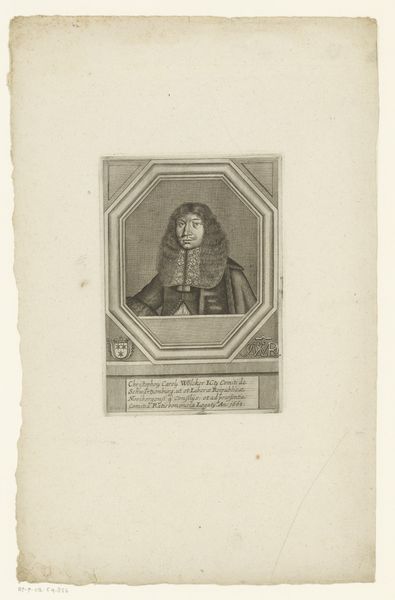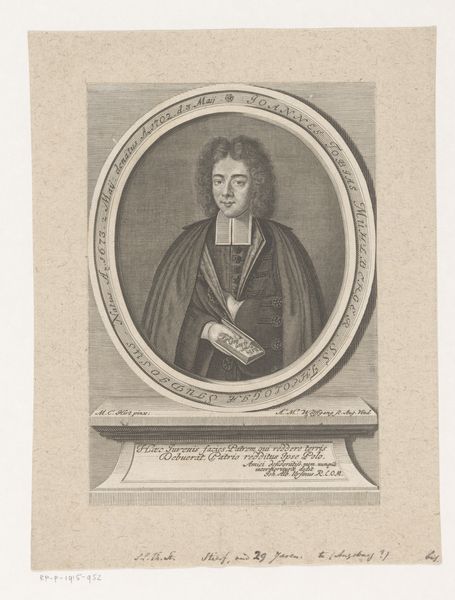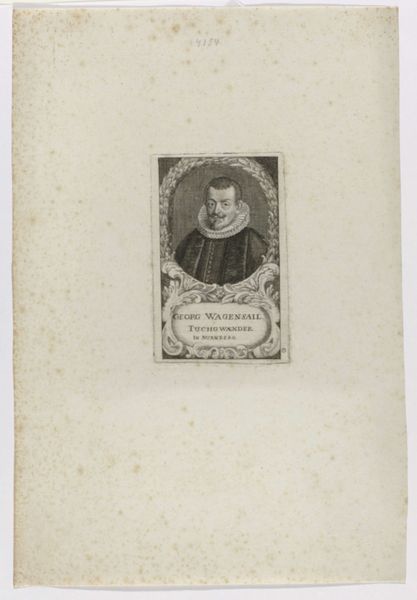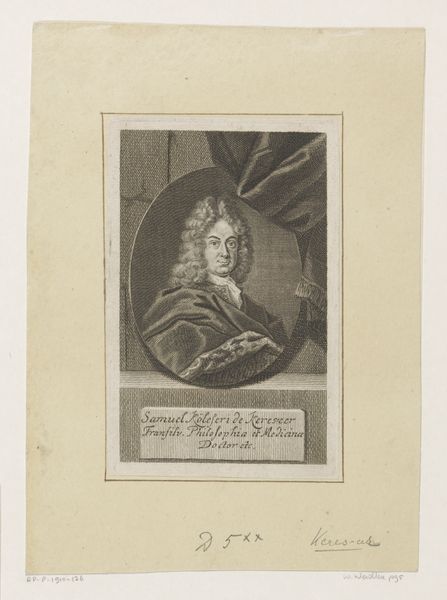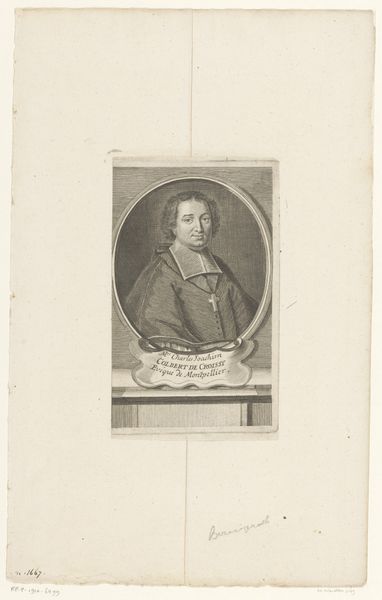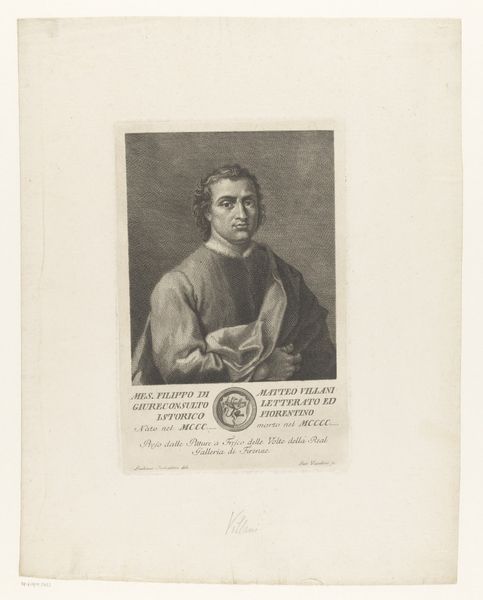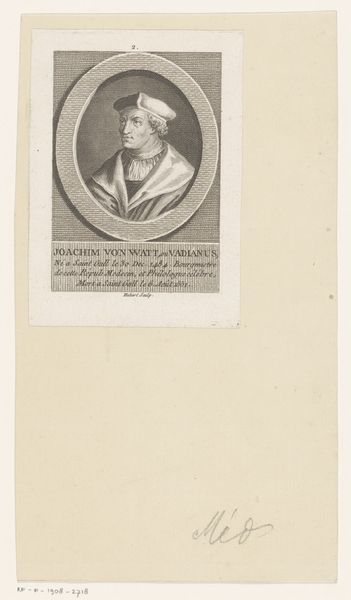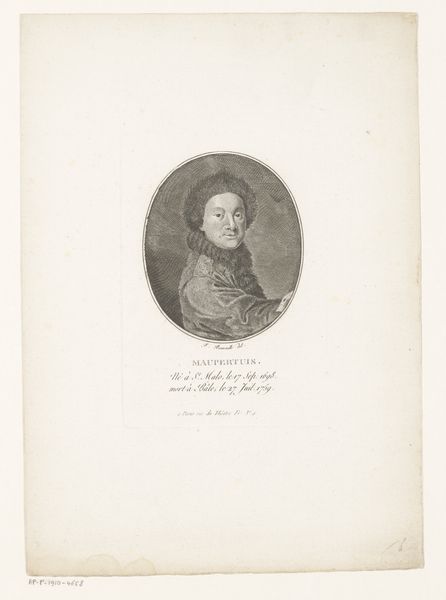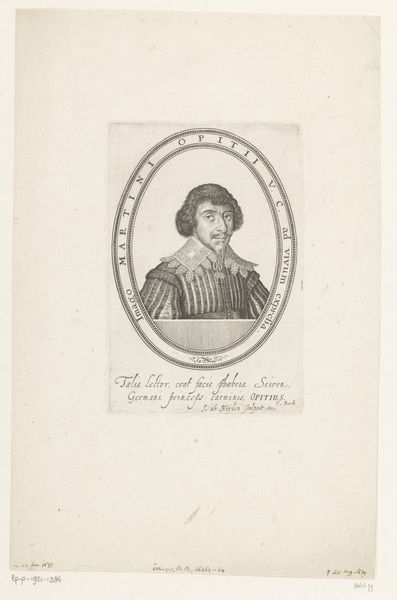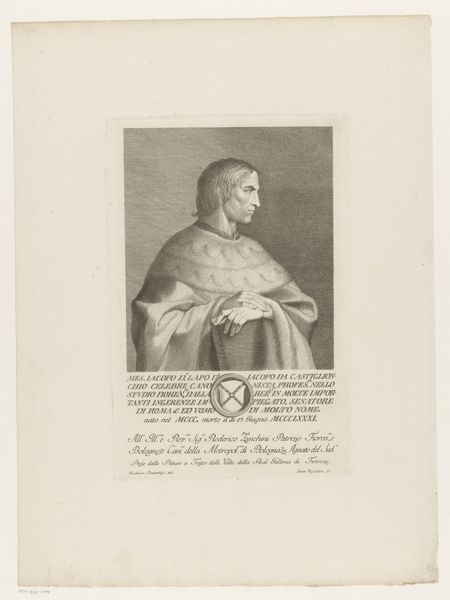
#
pencil drawn
#
photo of handprinted image
#
aged paper
#
toned paper
#
light pencil work
#
ink paper printed
#
pencil sketch
#
old engraving style
#
personal sketchbook
#
pencil work
Dimensions: height 144 mm, width 88 mm
Copyright: Rijks Museum: Open Domain
Curator: Immediately, the starkness jumps out at me. A somber gent, enshrined in that oval frame like a precious but slightly forgotten memory. Editor: Indeed. This is a print of Benedetto Erba-Odeschalchi, dating sometime between 1712 and 1733, created by Johann Martin Bernigeroth. You can find it in the Rijksmuseum's collection. I’m curious about the printing process itself. It appears to be meticulously rendered ink on paper. Curator: Oh, I'm lost in his eyes. He seems caught between worlds—a premonition of future sorrows, perhaps. I see that melancholic glaze mirrored even in the swirling lines of the engraving. He seems so serious! Editor: Precisely. The use of engraving in portraiture like this highlights a specific form of image reproduction available during that era. Think about the labour and skill involved. Each line, each shade, painstakingly etched into the plate, wiped with ink, pressed onto the page, transforming metal into, well, melancholy, as you put it! And its social role…multiple copies mean broader distribution. Curator: I’d never considered the distribution aspect of printing. For me, there’s almost something fragile and timeless in the tonality, something ghostly. How printing translates ephemeral emotion into something…stark and undeniably permanent, don't you agree? Editor: Permanent within its material limits, certainly. The quality of the paper, the ink, the pressure of the press – all of this informs the final image and affects how it ages over time. Plus, the paper's own history: where was it sourced? Who was making the paper itself? This opens pathways toward class and the division of labour within artistic creation. Curator: I see what you're driving at! I am moved by its enduring impact—the subject and all those processes are so much part of art, it opens an idea. Editor: Absolutely. The physical reality of the artwork and the context it came from can certainly make us appreciate all these details in front of us!
Comments
No comments
Be the first to comment and join the conversation on the ultimate creative platform.
